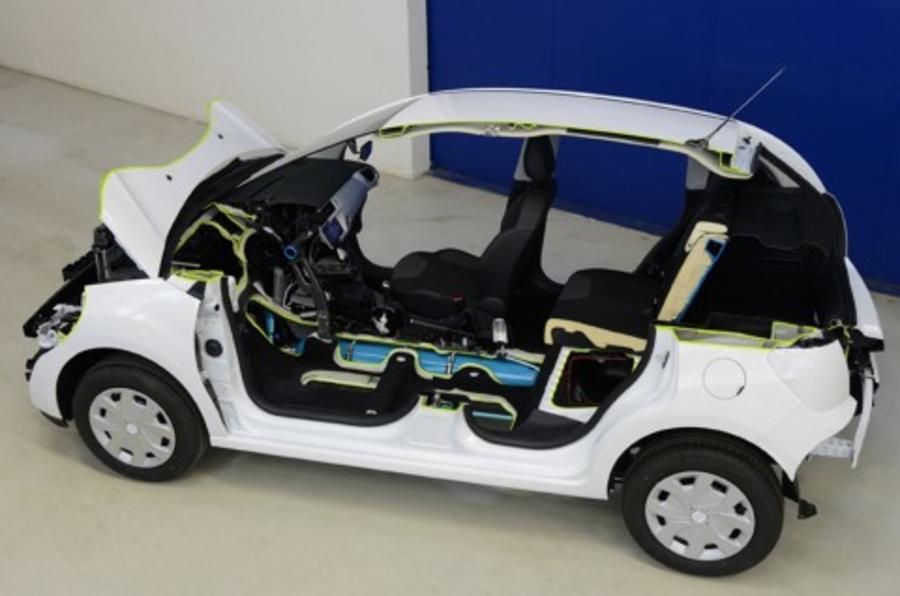The innovative Hybrid Air technology developed by PSA Peugeot Citroen is ready to go on sale - but will only do so when the company is convinced customers will adopt it.
The new powertrain technology uses compressed air instead of electricity to provide a secondary source of propulsion. When it was first revealed at the start of this year, PSA said it could potentially allow a car as big as a Citroen C3 or Peugeot 208 to emit just 69g/km CO2.
In a Hybrid Air vehicle, a conventional engine is mated to a bespoke epicyclic transmission, fed by a hydraulic motor which runs from compressed air. In the same way that hybrid electric cars can run on electric power alone for short durations, Hybrid Air vehicles can run on compressed air for a short amount of time.
However, speaking to Autocar at the Frankfurt motor show project leader Karim Makaddem said: "Creating the technology is not the hardest part. We have spent two years on the project, and believe we have found the solutions at an affordable price.
"But before we invest in production, we must prove that enough customers will buy it. Our market research must be rigorous - this is a very new product."
Makaddem highlighted that current research suggests the technology appeals most to young car buyers with less preconceptions about powertrain technology.
"We are asking people to reconsider what they know and the way they drive a little," he said. "Of course this means the new generation is more open minded."
In particular, Peugeot and Citroen are believed to be focussing efforts on major Chinese cities, where car sales are booming and pollution is a major problem. The Hybrid Air system also offers its greatest savings potential in urban driving.
"To invest in the manufacturing process we need to be sure the customers are open-minded, and it is clear China offers good opportunities," said Makaddem.
The final evaluations are expected to take around a year, meaning production could be possible as soon as 2015.
Click here for more Frankfurt motor show news.





Join the debate
Add your comment
Compressed air
Ask any plant engineer and he will tell you compressed air is the most expensive power source available.
It does have some advantages, it is non explosive for use where inflammable gasses may be present and it can be used to drive lightweight tools such as hand held grinders, drills and impact wrenches.
The problem is the inefficiency of compressing the air in the first place by either an onboard petrol or diesel engine or mains electric.
Eh?
So they spend billions (probably) developing a new technology, only to not bother releasing it because they're not sure there's any demand.
And PSA wonder why they're struggling to avoid going bust.
Nice idea though. It sounds basically the same as the Prius with the epicyclic gearbox, but storing the energy as compressed air instead of electricity in a battery. Possibly not using the Atkinson cycle though?
I wonder how far it can run on compressed air alone?
If they can hit 69g/km in a
If they can hit 69g/km in a 208 sized car, they would have a big market in the UK to get a cheap(ish) car under the new 75g/km London congestion charge exemption. I am sure there will be many other places that extreme low emissions of CO2 would provide enough of a sales incentive.